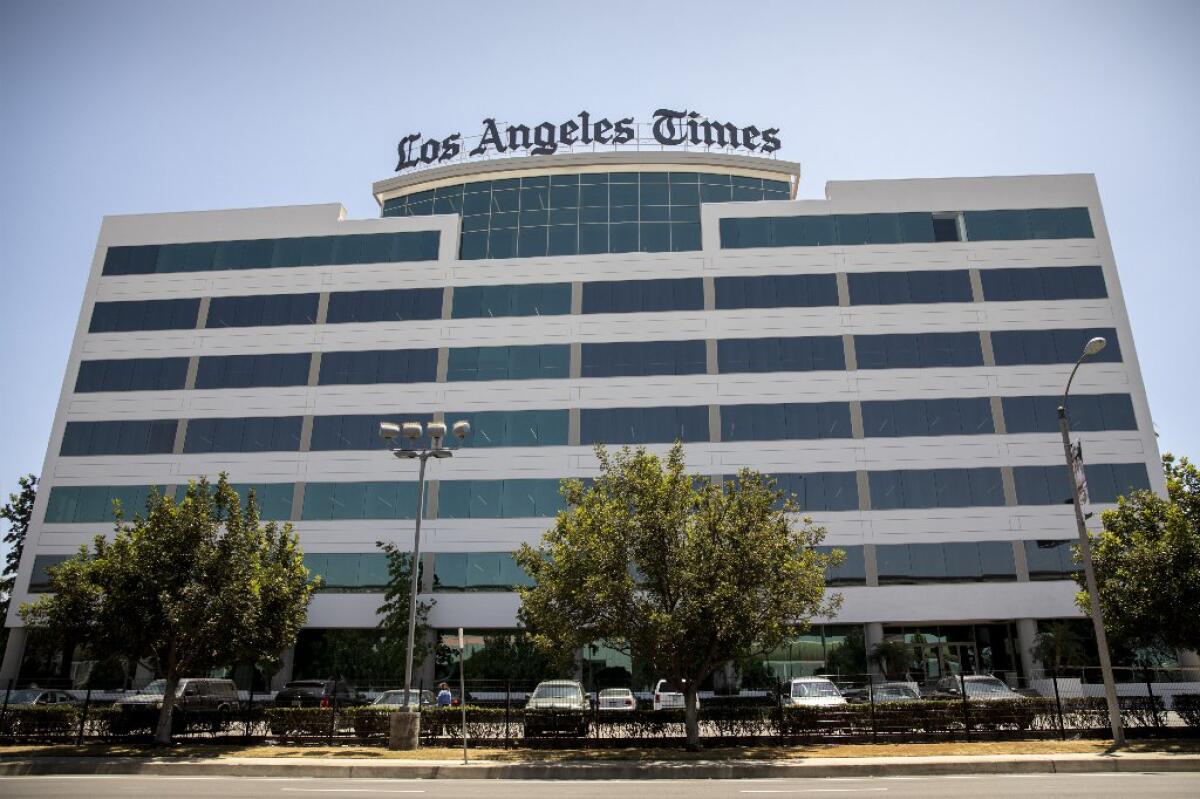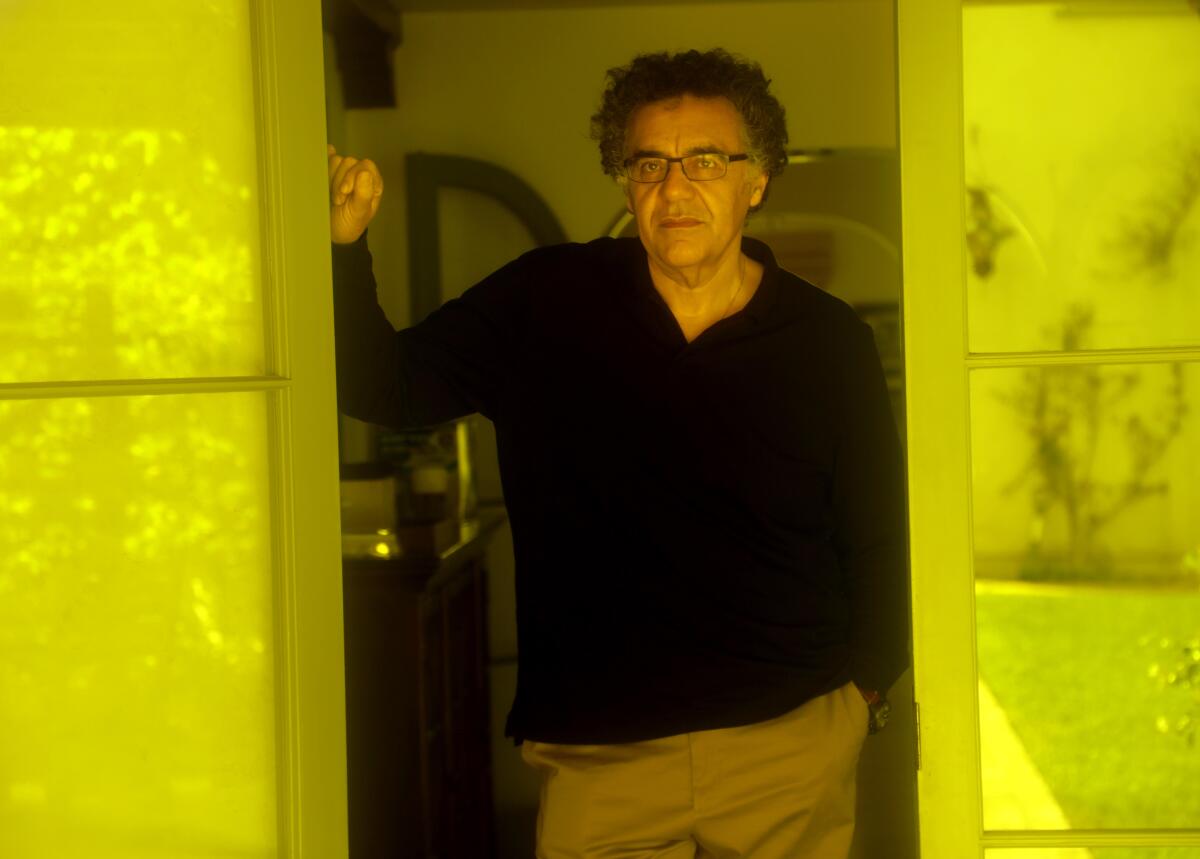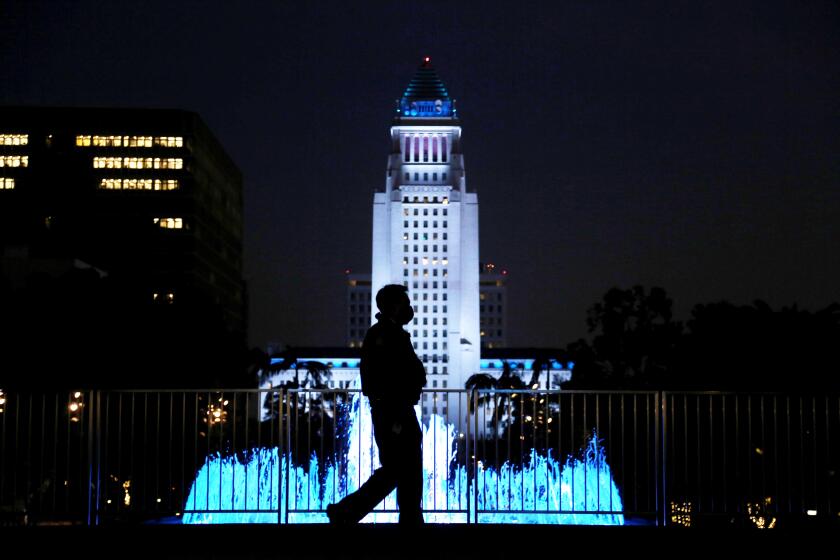Column: Past coverage failed the transgender community. It’s important to recognize it

- Share via
Good morning, and welcome to the Essential California newsletter. It’s Thursday, July 8. I’m Justin Ray.
In 2002, a teen named Gwen Araujo was murdered in Newark, Calif. Four men were charged with beating her to death after the 17-year-old’s body was unearthed from a shallow grave in the Sierra foothills. The men said they committed the crime because they discovered she was transgender.
Her case inspired then-Gov. Arnold Schwarzenegger to sign into law the “Gwen Araujo Justice for Victims Act” in 2006, which prohibits the use of the so-called gay panic defense or trans-panic defense. As stated by the LGBT Bar, that is a “legal strategy that asks a jury to find that a victim’s sexual orientation or gender identity/expression is to blame for a defendant’s violent reaction, including murder.” It can even mean the fear of being seen as LGBTQ is used as justification for killing someone. The defense was notoriously used during the murder trial of one of the men convicted of fatally beating college student Matthew Shepard in Wyoming.
So Araujo’s death, while unjust, led to a big change for California’s LGBTQ community, including legislation. I find her inspiring because she was who she was in an age of limited trans visibility in politics and popular culture, before social media began driving greater awareness of the epidemic of anti-trans violence and long before the commercial brands tried to get in on the “trend” of Pride. But trans people don’t have a choice to be brave.
Araujo was way ahead of the curve. We failed her by being behind.
As a gay man, I wanted to cover her case during Pride month to remember someone the LGBTQ community lost. But I discovered that this paper, specifically, failed her, too. When I went to search for information about her case through the Los Angeles Times archives, I had a bad feeling we probably made mistakes in our coverage.
My assumptions were right. We “deadnamed” her, meaning we used her birth name rather than her correct, identity-affirming one. We focused on her trans identity and failed to say anything else meaningful about her. We leaned heavily on comments from witnesses who made offensive remarks, whether out of bigotry or ignorance, rather than talking to actual LGBTQ advocates.
This paper wasn’t alone. As this Columbia Journalism Review piece points out, the New York Times and USA Today mishandled Araujo’s case. (I was actually the one who assigned the CJR piece to journalist Nico Lang while I was at the magazine.)
Another 2013 article we wrote about a trans woman who was killed in Hollywood had language so upsetting that GLAAD organized a petition of protest and met with The Times to discuss better ways to cover the community. “Throughout our lives, people refuse to acknowledge our gender identities, use our birth names and birth genders to refer to us against our will, and respond with varying degrees of harassment and violence when we protest,” the petition read.
There are other instances of harmful language. I’m not linking to these stories or including offensive language because it is hurtful to the trans community to repeat or elevate these words.
We perpetuated harmful stereotypes. We didn’t take the time to understand the people we were writing about. We allowed this blindness to guide our words. It didn’t serve our readers or our society.
When asked about our past coverage, and in what ways the paper has worked to prevent mistakes from being repeated, a company spokesperson said:
“We, as a news organization, have gained a much greater understanding of issues of identity in recent years. We are committed to being a voice for people who are marginalized and underserved, and that certainly includes the LGBTQ community. Identity, our society’s evolving understanding of it and the language surrounding it is an ongoing part of the discussion with our standards and practices group. Our current guidance is to let the archived stories remain as they are. While we have not made any changes to our style in this regard recently, we are constantly listening and evaluating our guidelines.”
In writing this, I hope to bring attention to our past mistakes. (I also want to note that this column was read and edited by newsroom managers.) Discussing these past stories is important because it is the only way we will improve. We have to admit our failings to learn from them.
And now, here’s what’s happening across California:
Note: Some of the sites we link to may limit the number of stories you can access without subscribing.
L.A. STORIES
Women say a ‘frat house’ culture at the L.A. Fire Department blocks them from jobs. In 2019, a group of women who were veterans of the city’s Fire Department met with Mayor Eric Garcetti to urge him to fulfill his promise of expanding the ranks of female firefighters. But advocates for women in the Fire Department are dismayed by what they view as the slow progress at the LAFD. Their unhappiness burst into view in recent weeks, amid a public falling out between the Garcetti administration and two of its appointees on the Fire Commission who have been the most vocal advocates for women’s rights. Los Angeles Times
George Floyd valentine. The Los Angeles police officer who shared a photo of George Floyd with the words “you take my breath away” in a valentine-like format has been cleared of wrongdoing. The officer, who has not been named publicly, was found not guilty of administrative charges by an internal disciplinary panel made up of community members. The officer will not be punished. Los Angeles Times
L.A. reels from an alarming spike in killings. Homicides are up 25% this year across Los Angeles, although the brunt of the increase has been felt in South Los Angeles, where killings have jumped 50% over the same time last year. Shootings citywide, meanwhile, have spiked by half this year. Police and community activists are bracing for tough months ahead because the summer traditionally brings with it a rise in bloodshed. Los Angeles police officials say guns are fueling the rise. Los Angeles Times
Los Angeles filmmaker and author Rodrigo Garcia will join L.A. Times Book Club readers to discuss “A Farewell to Gabo and Mercedes” with Times editor Steve Padilla. Garcia’s book is a memoir about his father, renowned author Gabriel García Márquez, and his mother, Mercedes Barcha. This free virtual event starts at 6 p.m. on July 29 and will be livestreamed on Facebook, YouTube and Twitter. Register on Eventbrite. For now, you can read our interview with Rodrigo Garcia. We also posted a Márquez reading guide. Los Angeles Times

'The Times' podcast
Our new weekday podcast, hosted by columnist Gustavo Arellano, takes listeners beyond the headlines. Subscribe on Apple Podcasts and follow on Spotify.
POLITICS AND GOVERNMENT
A Sacramento judge tentatively rejected a request by 44 California district attorneys seeking an order halting the state’s early release of thousands of inmates. The rules had been adopted during the height of the COVID-19 pandemic in an effort to lessen crowding within state prisons. The new rules affected 76,541 inmates and granted prisoners convicted of violent crimes one day of good-conduct credit for every two days served. Sacramento Bee
CRIME AND COURTS
The mother of a girl who was killed in 2020 while in the care of Sacramento’s foster care system has filed a lawsuit. Kendra Czekaj, 12, was struck and killed by a truck on Interstate 80 on Jan. 15, 2020, as she chased after a friend who was running away from the children’s home. Now Michele Bryant, Kendra’s mother, is filing a suit for the “negligent and unlawful actions that resulted in Kendra’s death.” Sacramento County spokesperson Kim Nava said it is Sacramento County’s policy not to comment on pending litigation. ABC 10
California’s ‘Castle Doctrine’ explained. For the third time in just a week, a homeowner shot and killed an apparent home intruder. On the books since 1872, California’s “Castle Doctrine” gives people who believe their lives are in danger the right to act in self-defense after someone enters their home or property without permission. “You have a right to use as much force as you need to use to make yourself feel safe against that person,” said Sacramento-area criminal defense attorney Jennifer Mouzis. There are times, however, when the Castle Doctrine doesn’t apply. KCRA
Support our journalism
HEALTH AND THE ENVIRONMENT
Can COVID-19 cause lasting erectile dysfunction? The problem has been observed in some patients, but experts agree more study is needed to form any conclusions. One expert, however, did say he suspected the risk was higher in patients who suffered from pneumonia accompanying COVID-19, which triggers inflammation of the blood vessels. Los Angeles Times
CALIFORNIA CULTURE
The popular podcast “Your Own Backyard,” which explored the disappearance of Cal Poly freshman Kristin Smart, is adding two new episodes after arrests in the case. Chris Lambert, the podcast creator, said in a news release that the additional episodes will provide new information ahead of the trials of Paul and Ruben Flores, her alleged killers. The series started as a local podcast and then exploded onto the national scene. ABC 10
Free online games
Get our free daily crossword puzzle, sudoku, word search and arcade games in our new game center at latimes.com/games.
CALIFORNIA ALMANAC
Los Angeles: You guessed it: sunny again, 86. San Diego: Clear skies, sunny eyes, 74. San Francisco: Cloudy, 68. San Jose: Get your margaritas, 83. Fresno: Oh, hot damn, 107. Sacramento: Burning up! 103.
AND FINALLY
Today’s California memory is from Lucy Hoffman:
I’m about to turn 80 and came to L.A. in 1968 to work as a nurse. I stayed with friends in Signal Hill and drove daily to UCLA to work at the hospital. No problem! How easy it was to drive the freeways, rent a cheap apartment and go to Santa Monica Pier on my days off. I lived in Westwood and almost three times weekly visited friends in Studio City and stayed late. No problems with traffic. I know I was young, but it was so easy to get around. I wish we could all return to those exciting days.
If you have a memory or story about the Golden State, share it with us. (Please keep your story to 100 words.)
Please let us know what we can do to make this newsletter more useful to you. Send comments to essentialcalifornia@latimes.com.
Sign up for Essential California
The most important California stories and recommendations in your inbox every morning.
You may occasionally receive promotional content from the Los Angeles Times.




